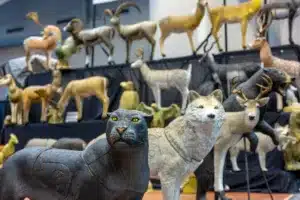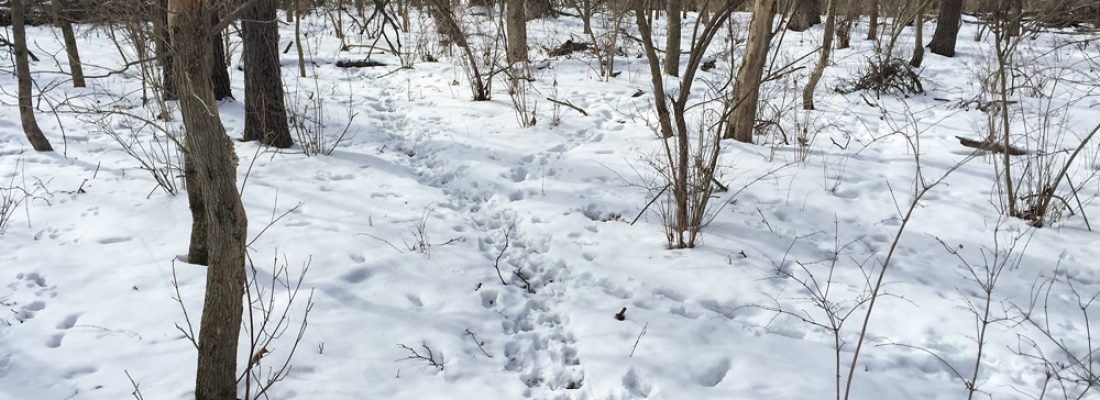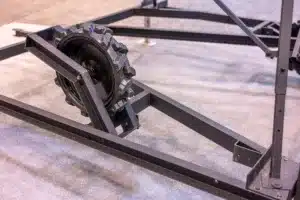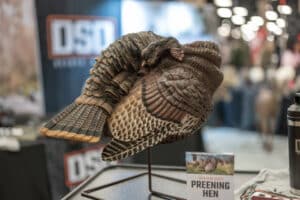No products in the cart.

365 Archery 3D Archery Targets
When folks enter a new industry, or even a new subsection of their industry, they usually dip their toe in by offering one or two


As mother nature slowly but surely loosens its grip on us here in the Midwest, there is no better time to be out scouting for whitetails to help increase your odds of success this coming fall. I’ve found some of the best times to be out scouting begins immediately after your whitetail season ends for the year. Many hunters would rather spend the cold and sometimes snowy parts of February and March watching college basketball or sitting inside the comforts of their own home wishing it was spring turkey season already. However, die-hard whitetail hunters know their season doesn’t stop after the final bell of the season has rung…there is a lot of work to do after your hunting season closes to prepare for next fall.
Trails – Towards the end of the fall whitetail season, depending on how long your season lasts in your home state, trails start to appear out of nowhere and can be very prominent on the forest floor. Take note of these trails now, and begin looking for good treestand locations based on available cover for late season hunting spots. While the trails seem to stick out like a sore thumb right now, come spring/summer the vegetation on the forest floor grows and may hide the trails come September/October. This makes it much tougher to locate closer to hunting season.
Bedding Areas – One of my favorite times of the year to go out and locate bedding areas is usually a couple of days after a heavy snow. The snow (or lack thereof in spots) makes it impossible to miss the bare three-foot wide semi-circular beds on the ground. Take note of these areas, and with the help of the new knowledge you have gained of trails leading into and out of these areas, you will be able to better choose where to hang your stands to intercept deer as they move between feeding and bedding areas.
Creek Crossings – Depending on the width of the creek and how steep the banks are on either side, sometimes the only indication deer are crossing the area are faint tracks at the edge of the creek. Other times it can look like a deer highway! Much like the trails mentioned above, these creek crossings can be seen much easier as the ground vegetation dies off or with the remnants of a light snow is on the ground. These crossings can sometimes be great natural funnels depending on the topography of the surrounding land.
While you are out putting all of these miles on your boots, make sure you keep your eyes peeled for sheds. Follow trails, walk fence lines, creek crossings, and walk any large late season food sources. I have also had luck following faint blood trails in snow on my way to a newly dropped shed. They sometimes seem to hide in plain sight.
We hope you find these tips beneficial to you, and hopefully they will help you out come this fall. Make sure you stop by our Facebook page and share your success with the rest of SELFILMED fans. You may end up on the homepage of the SELFILMED website!
Want to stay up-to-date on what’s happening on the SELFILMED Blog and be the first to know about future giveaways and promotions? Enter your email address at top right to follow us and you’ll receive notifications by email the instant new articles are posted!

When folks enter a new industry, or even a new subsection of their industry, they usually dip their toe in by offering one or two

Highlights of Greylight’s new releases for 2024 – the Daybreak Blind, Transformer Tower, and Nomad trailer.

With one of their coolest decoys to date, the NWTF floor was buzzing with talk of the new DSD Preening Hen decoy. It’s almost TOO
Don’t miss a thing! Subscribe below to keep informed on everything that’s happening with the folks at SELFILMED.com